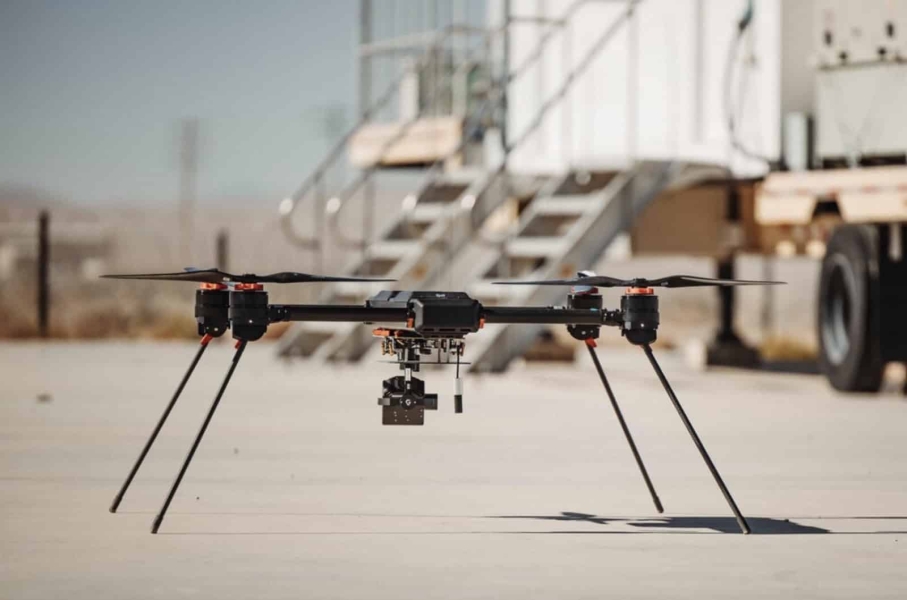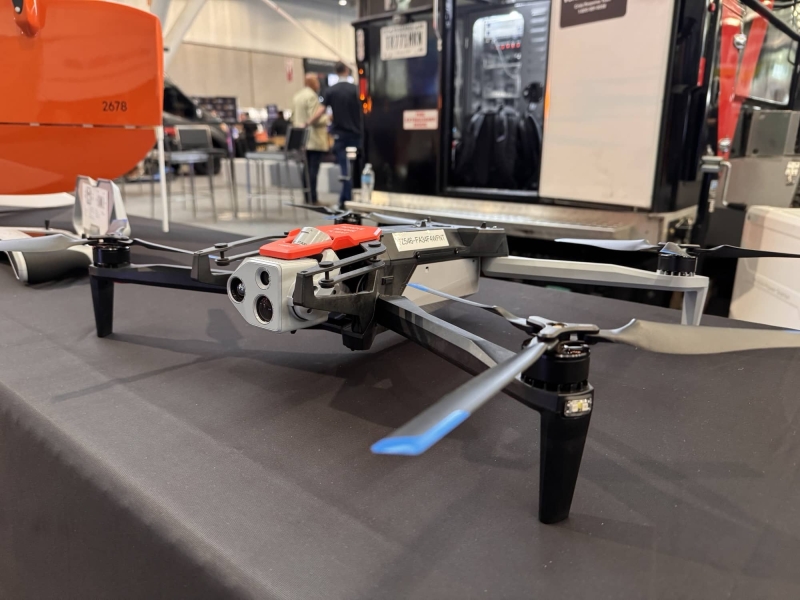Pentagon’s DOGE Unit Seizes Control Of Drone Program After Replicator Failures, Targets 30,000-Unit Buy

The Pentagon’s Department of Government Efficiency unit is leading a previously undisclosed effort to overhaul the U.S. military drone program, aiming to acquire at least 30,000 cheap drones in the coming months—a dramatic intervention that positions Red Cat, Skydio, and other American manufacturers for significant contract wins after years of bureaucratic delays, according to a Reuters exclusive.
The DOGE involvement, which has not been previously reported, grants the controversial efficiency unit sweeping influence over a military drone program that President Donald Trump designated as a defense priority in his June 6, 2025 Executive Order 14307, “Unleashing American Drone Dominance.” Five people with knowledge of the matter confirmed DOGE’s central role to Reuters.
Former Marine And Goldman Sachs Trader Leads DOGE Drone Team
The DOGE drone team is being led by Owen West, a co-author of Defense Secretary Pete Hegseth’s July 2025 drone memo who joined DOGE earlier this year. The former Marine and Goldman Sachs energy trader previously served as assistant secretary of defense overseeing special operations forces from 2017 onward. West’s LinkedIn profile indicates he has worked as a financial analyst at the Department of Defense since February 2025.
DOGE officials have requested detailed information on drones from across the Pentagon, including the Army, Marines, Navy, Air Force, and the Defense Innovation Unit, seeking specifications on weight, payload size, and operational capabilities, according to two people familiar with the matter.
Intervention Follows Replicator Program’s Technical Failures
The DOGE intervention comes as the Pentagon’s ambitious Replicator Program—designed to deploy thousands of AI-enabled drones—has fallen significantly behind schedule due to widespread technical failures and procurement missteps. DroneXL reported in September 2025 that the troubled $1 billion program was transferred to a new Defense Autonomous Warfare Group after multiple drone systems repeatedly failed during testing phases.
The Pentagon has been attempting to overcome a mixed track record on acquiring drones since announcing the Replicator initiative in December 2023. In 2023, Pentagon leaders announced plans to acquire and field thousands of autonomous drones by August 2025. However, the Department of Defense has not provided updates on the current status of that program.
Reuters could not determine how the DOGE effort would impact the Replicator initiative. In September 2025, a Pentagon official said Replicator capabilities were being “transitioned to the appropriate end state users,” according to Defense Scoop.
American Drone Makers Positioned For Major Wins
One of DOGE’s goals is to acquire at least 30,000 drones in the coming months before ramping up further, according to one person familiar with the plans. This would mark significant wins for U.S. drone companies that have been angling to supply the Pentagon with cheap drones.
Companies such as Red Cat, Skydio, and PDW, which sell quadcopter models to the Army for prices ranging from low thousands of dollars to hundreds of thousands, are well positioned to benefit. Venture-backed startup Neros recently signed a contract with the Marines for its low-cost drone.

Red Cat Holdings unseated Skydio in November 2024 to win the Army’s Short Range Reconnaissance Program of Record, a five-year deal targeting 5,880 systems potentially worth up to $260 million. Despite that setback, Skydio continues producing over 1,000 drones monthly at its California facility and maintains contracts across multiple defense branches.
The timing could prove particularly beneficial for Skydio and other domestic manufacturers as DJI faces a December 23, 2025 deadline for automatic inclusion on the FCC’s Covered List following its designation as a “Chinese Military Company” by the Pentagon.
Hegseth’s July Directive Laid Groundwork For DOGE Takeover
In July 2025, Secretary of Defense Pete Hegseth pledged to cut red tape and assert U.S. drone dominance by approving hundreds of American-made drone models and launching training programs to prepare units for “drone wars”—a response to the widespread use of drones on Ukraine’s battlefield, which have exposed U.S. drone limitations.
Hegseth’s July 10 memorandum declared that “the department’s bureaucratic gloves are coming off” and reclassified small drones as “consumable” supplies, allowing field commanders to procure systems directly without lengthy Pentagon approval processes.
The directive followed Trump’s June executive order, which directed federal agencies to prioritize American-manufactured drones and accelerate domestic production for both commercial and military applications.
The order specifically mandated that “the Department of Defense must be able to procure, integrate, and train using low-cost, high-performing drones manufactured in the United States.”
Ukraine War Exposes U.S. Drone Production Gap
The urgency behind the DOGE effort reflects harsh lessons from Ukraine’s battlefield, where drones have become the dominant weapon system. Ukraine has announced plans to manufacture 4.5 million first-person-view (FPV) drones in 2025 and at least 30,000 long-range attack drones, while Russia claims to have produced hundreds of thousands of small UAVs.
Defense Secretary Hegseth noted in June 2025 testimony that China produces over 100 commercial drones for every U.S.-made unit, underscoring the need for faster domestic production. Admiral Samuel Paparo, commander of U.S. Indo-Pacific Command, previously described plans to turn the Taiwan Strait into an “unmanned hellscape” using thousands of autonomous systems to deter Chinese military action.
The Pentagon did not immediately respond to a Reuters request for comment. The DOGE team is expected to submit a report to an executive committee in the Office of the Secretary of Defense by next week, according to a person with knowledge of the timeline.
DroneXL’s Take
For nearly four years, we’ve been tracking the Pentagon’s stumbling efforts to match the drone innovation happening in Ukraine’s necessity-driven combat labs. The Replicator program’s billion-dollar failure—plagued by technical breakdowns, interoperability nightmares, and procurement paralysis—perfectly exemplified everything wrong with traditional defense acquisition.
Now DOGE, the controversial efficiency unit that Elon Musk founded before departing in May 2025, has essentially seized control of military drone procurement. The irony is almost poetic: Musk’s own Replicator program couldn’t deliver working autonomous swarms, but his efficiency team is now positioned to bypass the exact bureaucratic bottlenecks that killed it.
We reported in October that Norway quietly fielded the first operational NATO drone swarm while Pentagon officials spent 2025 explaining why their program couldn’t work. The Norwegian model—small-scale deployment, embedded developers, direct user feedback—mirrors exactly what’s working in Ukraine and exactly what’s failing in Washington.
The 30,000-drone target sounds ambitious until you realize Ukraine plans to build 4.5 million FPV drones this year alone. For American manufacturers like Red Cat and Skydio, this represents a massive opportunity—but also raises questions about whether domestic production can scale fast enough to matter in a real conflict.
Owen West’s appointment is significant. As a former Marine who served in Iraq and later ran special operations policy at the Pentagon, he understands battlefield realities. His Goldman Sachs background suggests he might bring private-sector procurement speed to a system that typically measures timelines in years, not months.
But here’s the uncomfortable question: Should an ad-hoc efficiency unit with no congressional oversight be driving core Pentagon procurement strategy? DOGE has already faced numerous legal challenges over privacy violations and overreach. Now it’s essentially running military drone acquisition.
The Pentagon’s inability to solve this problem through normal channels forced this intervention. Whether DOGE succeeds where Replicator failed will tell us a lot about whether American defense procurement can adapt to 21st-century warfare—or whether it’s broken beyond repair.
What do you think? Share your thoughts in the comments below.
